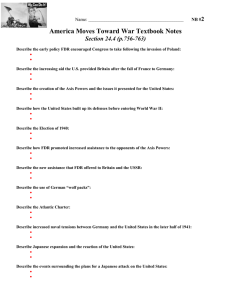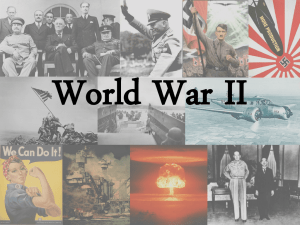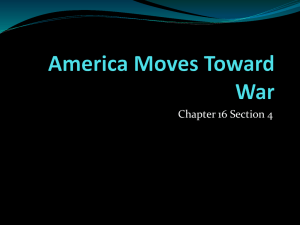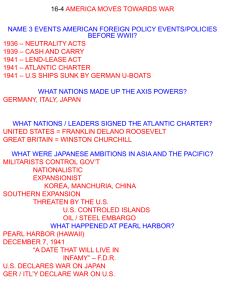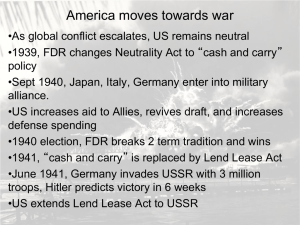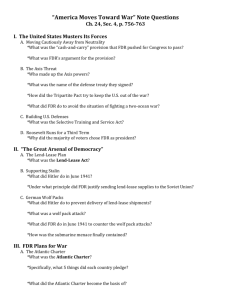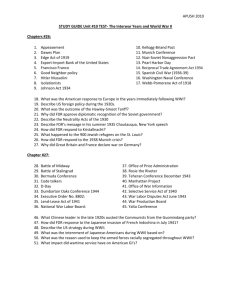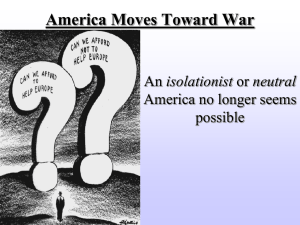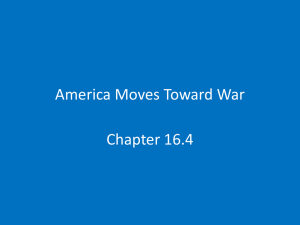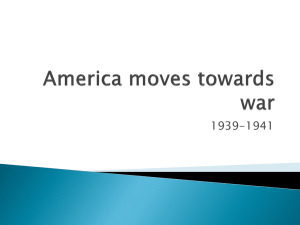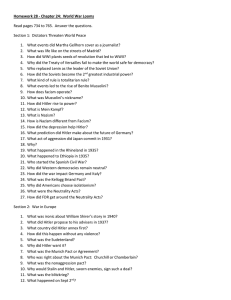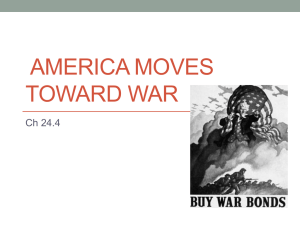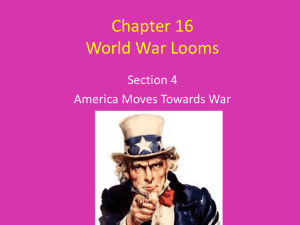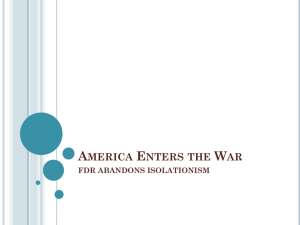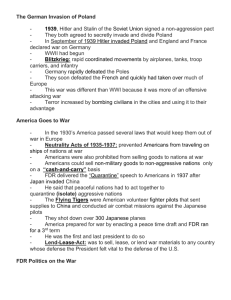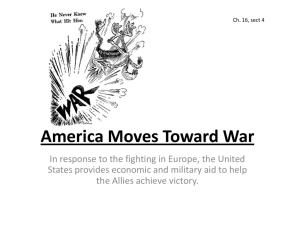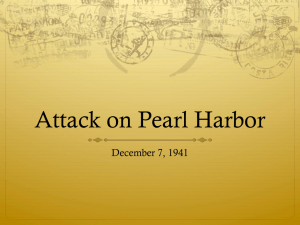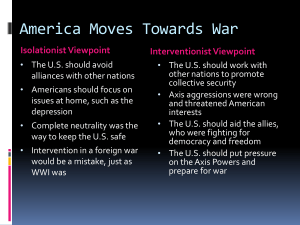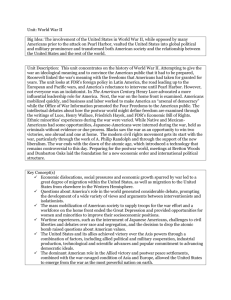17.1 Mobilizing for Defense - Clayton Valley Charter High School
advertisement
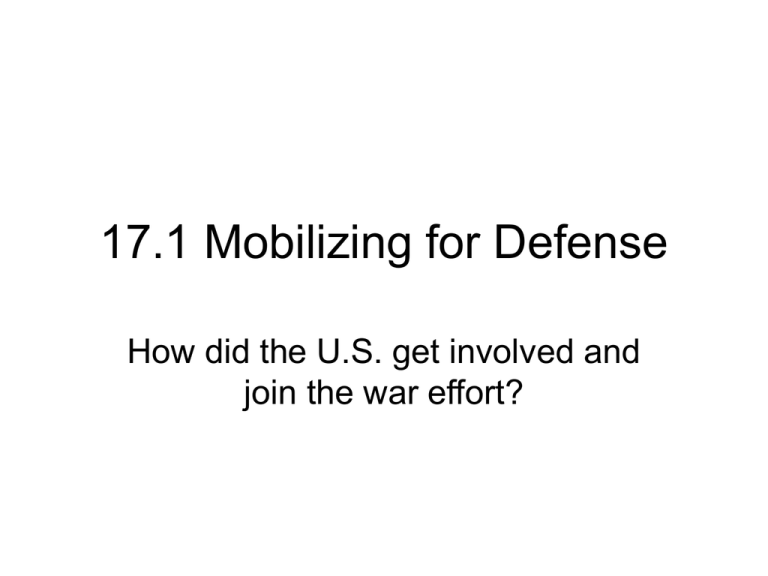
17.1 Mobilizing for Defense How did the U.S. get involved and join the war effort? Plans for War • In August 1941, FDR met secretly with Churchill; he did not commit the U.S. to war, but he and Churchill did sign the Atlantic Charter , a statement of goals for fighting WWII • Later, 26 nations signed a similar agreement; these nations were known as the Allies, united in fighting Germany, Italy, and Japan Continued • In Sept. of 1941, a German U-boat fired on an American merchant ship; FDR then ordered the Navy to fire upon German ships, and U-boats responded by sinking several American ships • The Senate finally allowed the arming of merchant ships Japan Attacks the U.S. • In Japan, expansionists had long dreamed of creating a huge empire; it began by seizing Asian territory held as colonies by European nations • When Japan invaded Indochina, the U.S. cut off trade with Japan • Japan needed American oil to function • The new prime minister of Japan was a militant general named Hideki Tojo • He started peace talks with the U.S. while still preparing for war Continued • The U.S. broke Japan’s secret communications code and knew Japan was preparing for a military strike but did not know details • On December 7, 1941, during the peace talks, Japan attacked the main U.S. naval base at Pearl Harbor in Hawaii • The Japanese crippled the U.S. Pacific fleet in one blow • Over 2400 people were killed Continued • FDR did not want to fight a war on two fronts; he had expected fighting in Europe, not Asia • On December 8, he addressed Congress asking for a declaration of war against Japan • They agreed, and caused Germany and Italy to declare war on the U.S. Americans Join the War Effort • The Japanese expected Americans to react with fear and despair; instead, they reacted with rage • “Remember Pearl Harbor” became a rallying cry; five million men volunteered for military service • Another ten million were drafted • New soldiers received eight weeks of basic training and known as “GIs” Continued • To free more men for combat, the Army Chief of Staff George Marshall suggested using women for noncombat military tasks • Congress created the Women’s Auxiliary Army Corps (WAAC) in 1942; about 25,000 women served in the military • Minority service was segregated, and African Americans did not even see combat until the last year of the war A Production Miracle • The nation’s factories quickly switched to war production • About 18 million workers kept these war industries going; 6 million new workers were women paid at 60 % as much as men • A. Phillip Randolph, an African American labor leader, got FDR to issue an executive order to end discrimination in defense industries Continued • The government hired scientists to develop new weapons and medicines, such as radar, sonar, and penicillin • The government also set up the Manhattan Project, which developed the atomic bomb • The Office of Price Administration (OPA) fought inflation by freezing prices on most goods • Taxes were raised, and the War Production Board (WPB) decided who would make war materials • Rationing was set up using coupons for scarce items and bought war bonds to support the war effort
